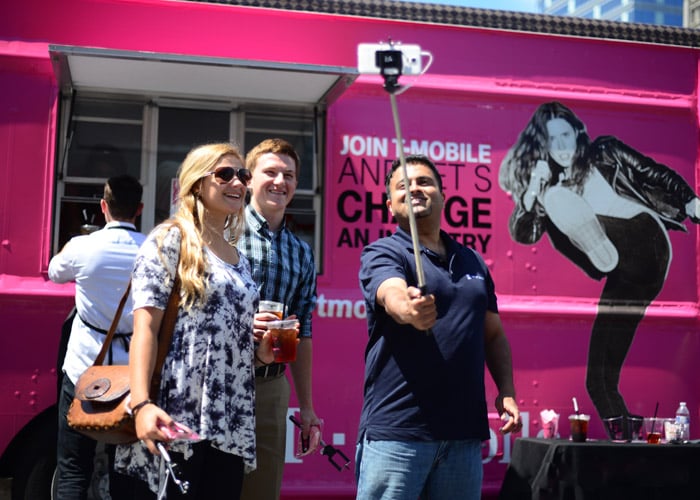 Strategic planners must consider the most effective and creative approaches that can be brought to market, with careful consideration of a client’s goals, budgets and creative. Media planners, buyers and strategists must always consider the often-overlooked channels, which typically includes experiential marketing. Here are ten reasons why Experiential marketing is an important part of a true integrated marketing strategy.
Strategic planners must consider the most effective and creative approaches that can be brought to market, with careful consideration of a client’s goals, budgets and creative. Media planners, buyers and strategists must always consider the often-overlooked channels, which typically includes experiential marketing. Here are ten reasons why Experiential marketing is an important part of a true integrated marketing strategy.
Experiential adoption is up.
As people spend 70% of their time away from their homes, they are in proximity to more experiential activations. Experiential activations are growing in popularity with Millennials. As their consumer influence grows in the market, so will the preference for experiential.
Successful brands use Experiential.
A study from EMI & Mosaic says, “75% of companies with event budgets between $50-100 million say they expect an ROI of more than 5:1 for live event and experiential programs” and “79% of brands said they planned to execute more event and experiential programs this year compared to last year.”
Experiential is (still) just below your competitor’s radar.
Despite rapid adoption of Experiential, there’s still plenty of room to take advantage as it only amounts to small portions of media budgets. That gives brands an opportunity to own experiential in their category, meaning a better share of voice than on typical, over-saturated media channels.
Experiential can creatively bring your brand to life.
Experiential campaigns that “WOW!” audiences are all about presenting a brand’s bold, creative stance. Experiential creative gives participants a closer look at a brand’s image, messaging and personality.
Experiential creates a different kind of impression.
Activations provide consistent short bursts of 1-on-1 engagement, yielding impressions that are deeper than static media. Experiential can be combined with other media for even better messaging and engagement.
Experiential amplifies other media.
Experiential marketing amplifies digital, social and mobile. An EventTrack report states, “98% of consumers create digital or social content at events and experiences.” Viewers of an activation become willing brand ambassadors who extend the life of the experience.
Experiential offers engagement over traffic.
Digital specialists are advocating for deeper engagement as their number one target goal. The days of
more site traffic as the goal are long gone. Engagement with quality traffic can be achieved IRL via experiential activations.
Experiential marketing only reaches humans.
In a world of increasing demand for attribution, Experiential reaches only humans, making it more authentic and real than many other strategies.
Experiential can be data and demographic driven.
New data tools mean that Experiential marketing can be carefully crafted to attract and engage specific demographics. Experiential marketers know when and where events are happening, and how to reach those attendees to engage with them 1-on-1.
Experiential solves the Audience + Location + Data equation.
Experiences can deliver the right message, to the right audience, at the right time. Successful brands are constantly tweaking their brand experiences, refining at the hyper-local level where different strategies cater to different environments and audiences.
This article is adapted from an original post on the EMC Outdoor blog.




